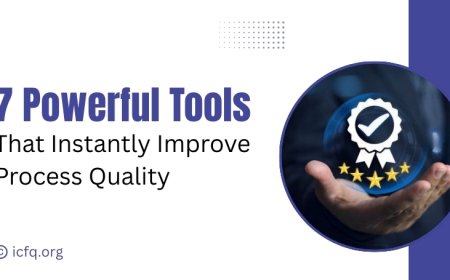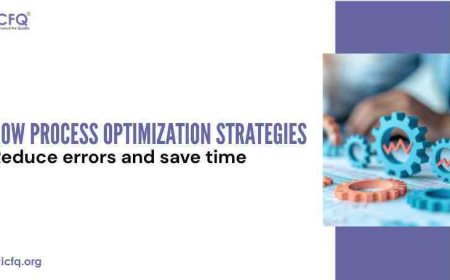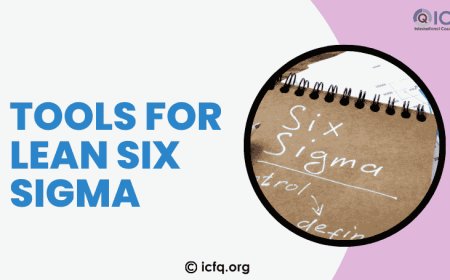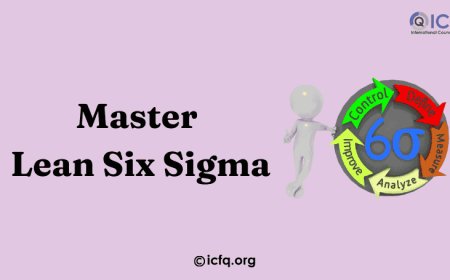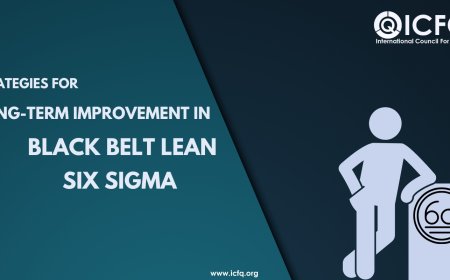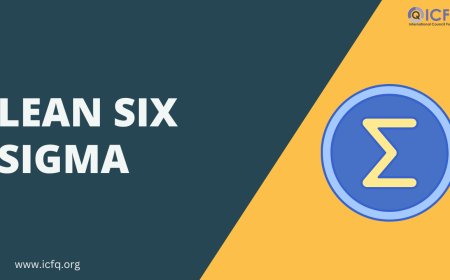Lean Six Sigma is a powerful and widely adopted methodology that combines two distinct approaches: 1. Lean and 2. Six Sigma to improve business processes and enhance overall organizational performance. Both Lean and Six Sigma originated independently but share the common goal of minimizing waste, optimizing efficiency, and delivering high-quality products or services.
Lean is rooted in the principles derived from the Toyota Production System. It focuses on identifying and eliminating non-value-added activities or waste within a process. The core principles of Lean include continuous improvement, respect for people, and a relentless pursuit of perfection. Lean methodologies aim to streamline processes, reduce lead times, and enhance customer satisfaction by providing the highest value with the fewest possible resources.
Six Sigma, on the other hand, is a data-driven methodology that originated in manufacturing but has since been applied across various industries. Developed by Motorola and popularized by companies like General Electric, Six Sigma aims to reduce defects and variations in processes. It utilizes statistical tools and techniques to measure, analyze, improve, and control processes to ensure they consistently meet or exceed customer expectations.
The integration of Lean and Six Sigma, often referred to as Lean Six Sigma, combines the strengths of both methodologies. It emphasizes a comprehensive and systematic approach to process improvement. Lean principles contribute to the elimination of waste and the creation of flow, while Six Sigma methodologies provide the tools and techniques for data-driven problem-solving and process optimization.
Principles of Lean Six Sigma
Lean Six Sigma is guided by a set of principles that form the foundation for its methodologies. These principles are aimed at improving efficiency, reducing waste, and enhancing overall process quality.
Customer Focus: Lean Six Sigma places a strong emphasis on understanding and meeting customer needs. By identifying and prioritizing customer requirements, organizations can tailor their processes to deliver products and services that align with customer expectations.
Continuous Improvement (Kaizen): The philosophy of continuous improvement is central to Lean Six Sigma. This involves an ongoing effort to enhance processes incrementally. Small, incremental changes over time can lead to significant improvements in efficiency and quality.
Waste Reduction: Lean principles target the elimination of waste, which refers to any activity that does not add value to the customer. Lean Six Sigma identifies eight types of waste, including overproduction, waiting time, unnecessary transportation, excess inventory, over-processing, unnecessary motion, defects, and unused employee creativity
Data-Driven Decision Making: Six Sigma relies heavily on data and statistical analysis to make informed decisions. By collecting and analyzing data, organizations can identify root causes of problems, measure process performance, and implement data-driven solutions.
Standardization: Standardizing processes helps to reduce variation and maintain consistency. This involves defining best practices and ensuring that they are followed consistently across the organization. Standardization contributes to stability and predictability in processes.
Visual Management: Lean Six Sigma often employs visual tools, such as flowcharts, dashboards, and graphs, to make information easily understandable and accessible. Visual management aids in communication, problem-solving, and monitoring process performance.
Team Collaboration: Lean Six Sigma encourages collaboration among cross-functional teams. Bringing together individuals with diverse skills and perspectives can lead to more comprehensive problem-solving and innovative solutions.
Respect for People: This principle from the Lean philosophy emphasizes the importance of valuing and respecting the contributions of individuals within the organization. It recognizes that engaged and motivated employees are essential for successful process improvement.
DMAIC Methodology: DMAIC (Define, Measure, Analyze, Improve, Control) is the structured problem-solving and process improvement approach within Six Sigma. This methodology provides a systematic framework for addressing and improving processes.
Error Proofing: The concept of poka-yoke involves designing processes and systems to prevent errors or mistakes. Error-proofing measures help in reducing defects and ensuring that processes consistently produce high-quality outputs.
The DMAIC methodology for Lean Six Sigma
The DMAIC methodology is a key component of Lean Six Sigma, providing a structured approach for process improvement. DMAIC stands for Define, Measure, Analyze, Improve, and Control. Here's an overview of each phase
Define: Objective Clearly define the problem or opportunity for improvement. Establish the project's goals and scope. Identify key stakeholders and their requirements. Project Charter Develop a project charter that outlines the project's purpose, scope, goals, timeline, and team members.
Measure: Data Collection Identify and collect relevant data to measure the current state of the process. This involves defining process metrics and establishing a baseline for performance. Process Mapping Create process maps to understand the flow of activities and identify areas where data can be collected. Determine the key inputs and outputs of the process.
Analyze: Root Cause Analysis Identify the root causes of problems and variations in the process. Use statistical tools and techniques to analyze data and find patterns. Data Analysis Utilize statistical methods to analyze the collected data. This phase aims to uncover the factors contributing to process variations and issues.
Improve: Solution Development Develop and implement solutions to address the root causes identified in the analysis phase. Brainstorm and evaluate potential improvement ideas. Pilot Testing Implement the proposed changes on a small scale (pilot) to assess their effectiveness. This allows for adjustments before full-scale implementation.
Control: Standardization Establish standard operating procedures and controls to sustain the improvements. Document the revised process and update work instructions. Monitoring and Feedback: Implement monitoring systems to track key process metrics. Provide ongoing training and communication to ensure that the improvements are sustained. Control Plan Develop a control plan outlining the actions to be taken if there are signs of process deviation. This ensures that the process remains within acceptable limits.
The DMAIC methodology is iterative, allowing for continuous improvement. As improvements are made and processes are stabilized, the methodology can be revisited to address new opportunities or challenges. DMAIC provides a structured, data-driven approach to problem-solving and process enhancement in various industries.
Applications of Lean Six Sigma
Optimizing Production Processes: Lean Six Sigma is widely employed in manufacturing to analyze and optimize production processes. Identifying and eliminating inefficiencies, reducing defects, and improving overall efficiency, help companies enhance their manufacturing capabilities.
Inventory Management: The methodology aids in minimizing inventory levels, which not only reduces carrying costs but also helps in maintaining a more responsive and efficient production system.
Reducing Lead Times: By focusing on process speed and efficiency, Lean Six Sigma contributes to the reduction of lead times in manufacturing, allowing companies to respond more quickly to market demands.
Streamlining Administrative Processes: Lean Six Sigma is applied to administrative processes in healthcare institutions to simplify workflows and reduce unnecessary steps, ultimately improving the efficiency of healthcare operations.
Patient Care Enhancement: The methodology is utilized to enhance patient care by identifying and addressing inefficiencies, reducing waiting times, and minimising errors in medical procedures.
Quality Improvement: Lean Six Sigma principles are employed to improve the overall quality of healthcare services, ensuring that patients receive the best possible care.
Customer Service Improvement: In service industries like banking and insurance, Lean Six Sigma is utilized to enhance customer service by identifying and eliminating bottlenecks and inefficiencies in customer interaction processes.
Error Reduction: The methodology helps eliminate errors in transaction processing, improving accuracy in financial transactions, and ultimately increasing customer satisfaction.
Efficiency in Call Centers: Lean Six Sigma principles are applied to call centres to streamline processes, reduce call waiting times, and improve the overall efficiency of customer support operations.
Optimizing Supply Chain Processes: Lean Six Sigma is employed to optimize supply chain processes, addressing issues related to order fulfilment, logistics, and supplier performance.
Reducing Costs: By identifying and eliminating waste in the supply chain, the methodology contributes to cost reduction, allowing companies to operate more competitively in the market.
Software Development Process Improvement: Lean Six Sigma is applied to improve software development processes, reducing defects in code, and enhancing project management in IT projects.
Efficient IT Service Delivery: The methodology aids in delivering IT services more efficiently and with higher quality, ensuring that technology solutions align with business objectives.
Financial Processes: In the financial sector, Lean Six Sigma is used to streamline processes related to loan approval, account management, and customer service, contributing to faster and more accurate financial transactions.
Risk Management: By identifying and addressing inefficiencies, Lean Six Sigma helps improve accuracy in financial reporting and reduce the risk of errors in financial transactions.
Administrative Process Optimization: Lean Six Sigma is applied in educational institutions to optimize administrative processes, reducing paperwork, streamlining enrollment procedures, and improving the efficiency of educational services.
Student Services Improvement: The methodology improves student services by identifying and eliminating bottlenecks in processes such as student enrollment, counselling, and support services.
Project Management Improvement: Lean Six Sigma principles are applied in construction and engineering projects to improve project management processes, reduce defects, and enhance overall project efficiency.
Cost and Time Efficiency: By eliminating waste and inefficiencies, Lean Six Sigma helps in delivering construction projects on time and within budget, ensuring better cost control and project success.
Manufacturing Process Improvement: In the aerospace and defence industries, Lean Six Sigma is utilized to improve manufacturing processes, ensuring high-quality production and reducing defects in critical components.
Supply Chain Optimization: The methodology is applied to streamline supply chain processes, ensuring that components are sourced efficiently and on time for aerospace and defence projects.
Benefits of Implementing Lean Six Sigma
Process Efficiency:
Lean Six Sigma identifies and eliminates various forms of waste, including overproduction, unnecessary movement, waiting times, and excess inventory. By streamlining processes, organizations can operate more efficiently. Optimized Processes The methodology emphasizes continuous improvement, leading to optimized processes that are not only efficient but also adaptable to changing demands and circumstances.
Quality Improvement:
Through rigorous analysis and improvement initiatives, Lean Six Sigma significantly reduces defects in products or errors in services, contributing to a higher level of quality. Consistency By standardizing processes and implementing best practices, Lean Six Sigma ensures a consistent level of quality across different products, services, and operational areas.
Cost Savings:
Lean Six Sigma helps organizations optimize the use of resources, whether it be time, materials, or labour. This optimization directly translates into cost savings. Reduced Rework By addressing the root causes of defects, the methodology reduces the need for costly rework, saving both time and resources.
Customer Satisfaction:
Lean Six Sigma focuses on meeting customer requirements and expectations. By improving processes and reducing lead times, organizations enhance customer satisfaction. Meeting Expectations Consistently delivering high-quality products or services, on time and with fewer defects, helps in meeting and even exceeding customer expectations.
Employee Engagement:
Lean Six Sigma fosters a culture of continuous improvement where employees are actively engaged in identifying and solving problems. Skill Development Training employees in Lean Six Sigma methodologies equips them with valuable skills in data analysis, problem-solving, and project management.
Strategic Alignment:
Lean Six Sigma initiatives are aligned with organizational goals, ensuring that improvements directly contribute to strategic objectives. Adaptability The methodology helps organizations adapt to changes in the business environment by instilling a mindset of continuous improvement and agility.
Data-Driven Decision Making:
Lean Six Sigma relies on data and statistical analysis to make informed decisions. This data-driven approach ensures that changes are based on evidence and analysis rather than intuition. Predictive Capability By analyzing historical data and trends, organizations can predict potential issues and take proactive measures to prevent them.
Time Savings:
Lean Six Sigma focuses on improving process speed, leading to reduced lead times for delivering products or services to customers. Faster Problem Resolution The methodology emphasizes quick identification and resolution of process issues, minimizing disruptions and downtime.
Financial Impact:
Through a combination of cost savings, improved efficiency, and enhanced quality, Lean Six Sigma contributes to increased profitability. Better Resource Utilization Organizations employing Lean Six Sigma principles ensure optimal use of financial resources by eliminating unnecessary costs and focusing on value-added activities.
Competitive Advantage:
Organizations that successfully implement Lean Six Sigma can differentiate themselves in the market by offering higher quality, more efficient products or services. Adaptability The ability to respond quickly to changing market conditions and customer needs provides a competitive edge in dynamic industries.
Supply Chain Improvement:
Lean Six Sigma helps optimize supply chain processes, leading to improved relationships with suppliers and better collaboration. Inventory Management Efficient supply chain management reduces carrying costs, minimizes waste, and ensures that products are available when needed.
Risk Reduction:
By identifying and addressing potential issues before they escalate, Lean Six Sigma helps organizations proactively manage risks. and Compliance Assurance The methodology ensures compliance with regulations and standards, reducing the risk of legal and regulatory issues that could impact the organization's reputation and financial standing.
Tools and techniques in Lean Six Sigma
Project Charter: Clearly defines the project's goals, scope, team members, timeline, and key stakeholders. Provides a roadmap and aligns everyone on the project's objectives.
SIPOC (Supplier-Input-Process-Output-Customer): Maps the high-level process flow, identifying suppliers, inputs, processes, outputs, and customers.Establishes the context and boundaries of the process.
Process Mapping: Graphically represents the steps and activities in a process. Visualizes the workflow, aiding in the identification of inefficiencies.
Data Collection Plan: Outlines methods and tools for collecting relevant data.Ensures systematic and accurate data collection.
Check Sheets: Simple tool for collecting and organizing data in real time.Facilitates data collection on the shop floor or in operational settings.
Fishbone Diagram (Ishikawa or Cause-and-Effect Diagram): Identifies potential causes for a specific problem or effect. Systematically categorizes and explores root causes.
Histograms: Visual representation of data distribution.Provides insights into the variation within a process.
Pareto Analysis: Identifies the most significant factors contributing to a problem.Prioritizes areas for improvement by focusing on critical issues.
Brainstorming: Generates creative ideas for process improvement.Encourages team collaboration and diverse thinking.
Kaizen Events: Short, focused improvement projects with cross-functional teams rapidly implement improvements in a short timeframe.
Failure Mode and Effects Analysis (FMEA): Identifies and prioritizes potential failure points in a process. Proactively addresses and mitigates potential risks.
Control Charts: Monitors process stability over time. Ensures that improvements are sustained and variations are within acceptable limits.
Standard Operating Procedures (SOPs): Documented instructions for routine tasks.Provides a reference for maintaining consistency in processes.
Training Plans: Ensures that team members are trained on updated processes and procedures. Supports the ongoing sustainability of improvements.










